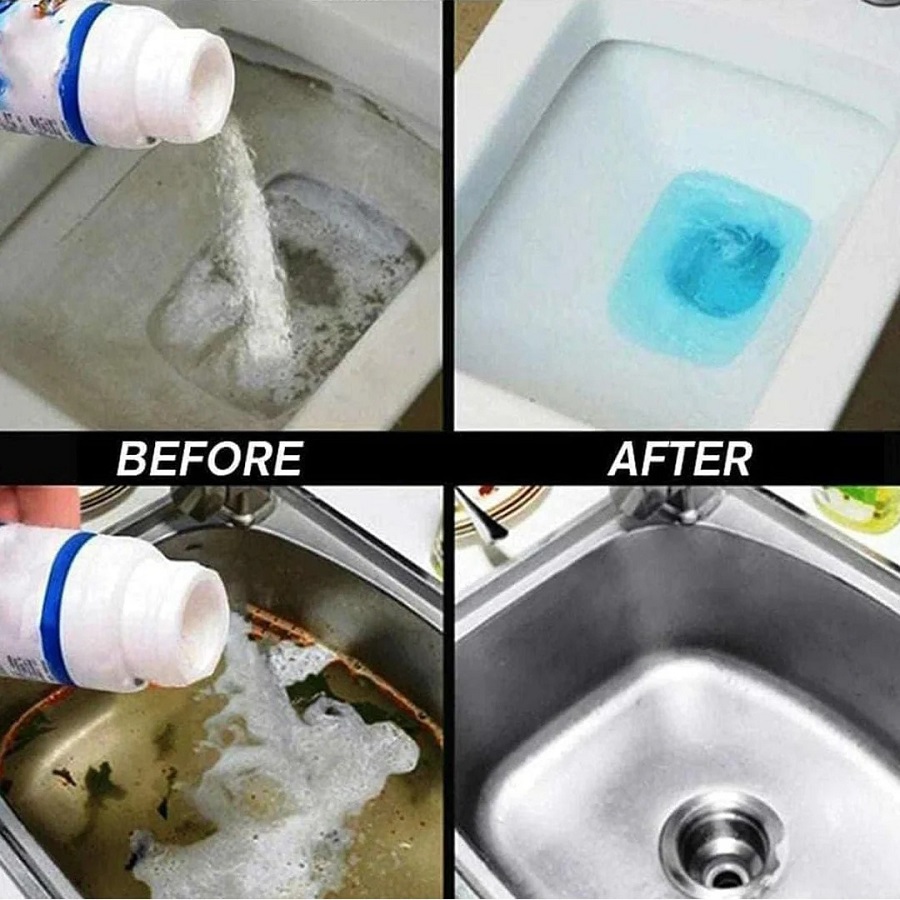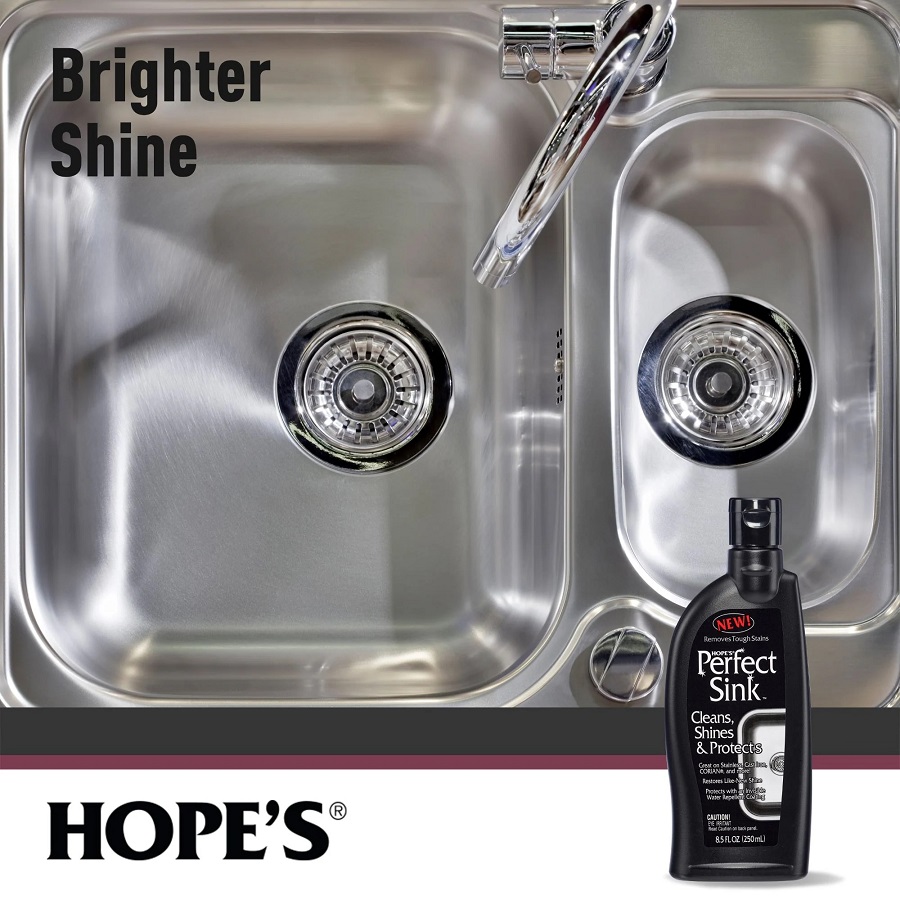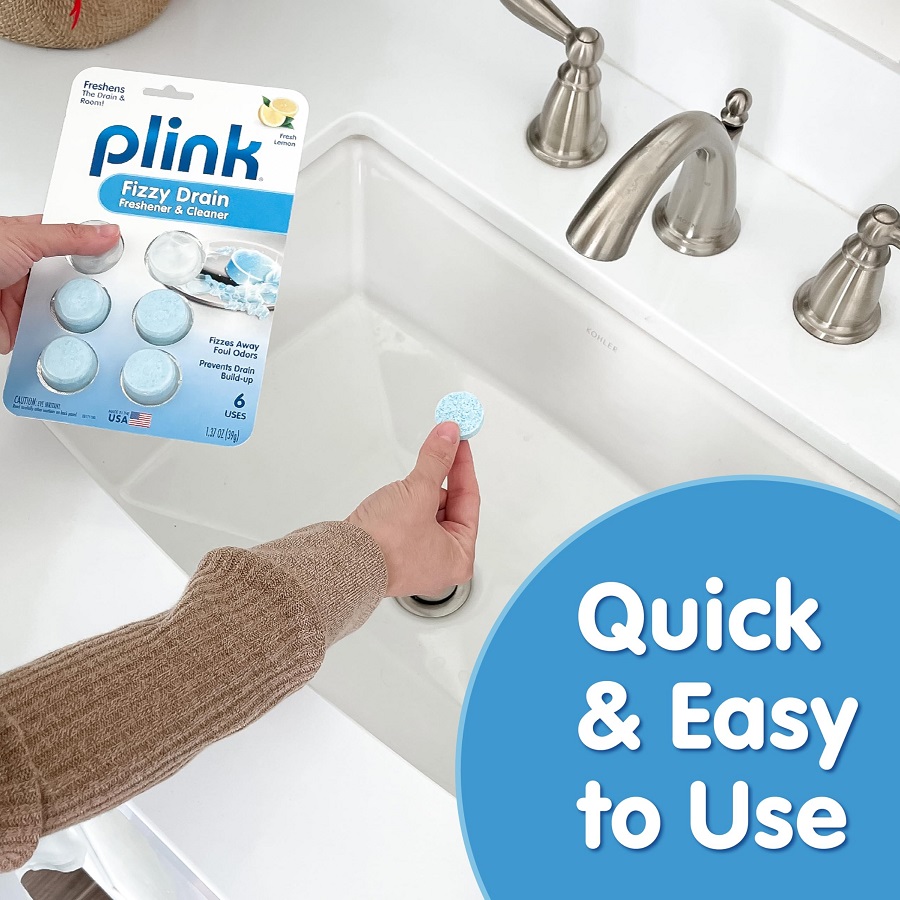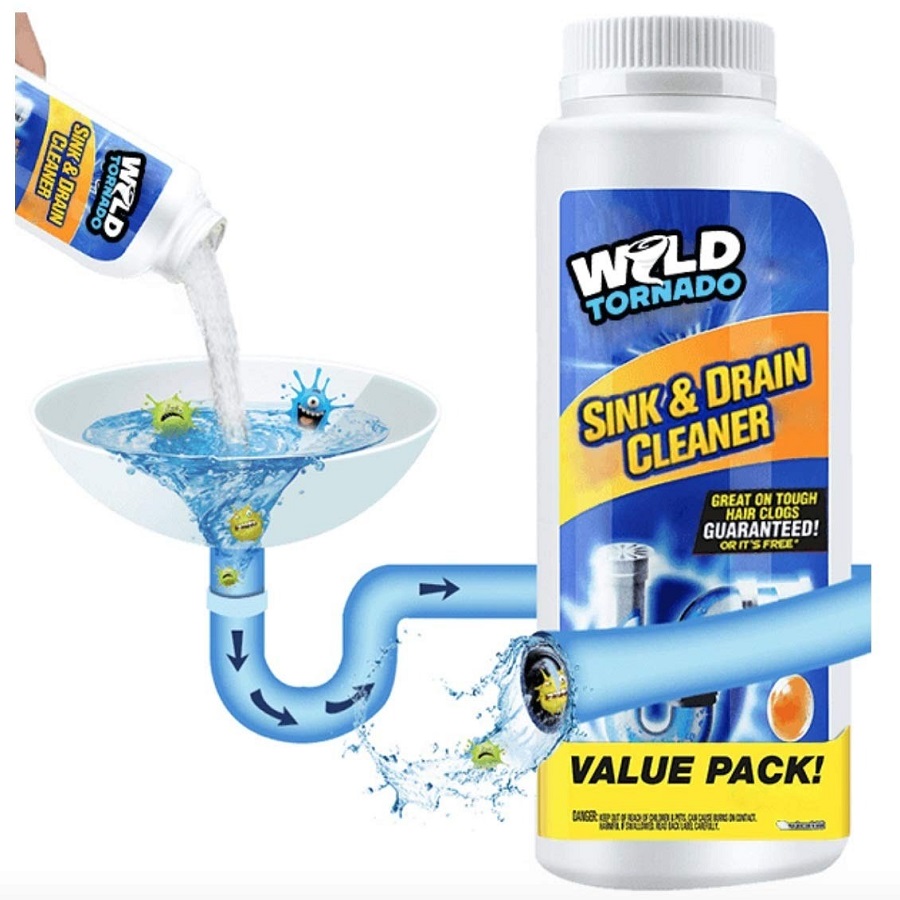The Importance of Keeping Your Kitchen Sink Clean
Ensuring your kitchen sink is clean is crucial for several reasons. First, it’s where we wash our food, dishes, and hands. Bacteria and germs can thrive in sinks, leading to health risks. A dirty sink can become a breeding ground for harmful microbes like E.coli and salmonella. These can cause food poisoning and other illnesses.
Keeping your kitchen sink clean also helps prevent unpleasant odors. Food particles and grease can accumulate, causing a foul smell. Moreover, a sparkling sink enhances the overall cleanliness of your kitchen. It reflects well on your household hygiene standards.
Regular cleaning prevents buildup and maintains the sink’s material. Whether it’s stainless steel, ceramic, or porcelain, proper care can extend its life. Clogs and slow water drainage often result from neglect of regular cleaning. By using a kitchen sink cleaner regularly, you can avoid these issues.
Lastly, a clean kitchen sink makes a positive impression on guests. It shows that you value cleanliness and take pride in your home. With daily use, your kitchen sink requires attention. So, make it a part of your routine to use a kitchen sink cleaner. This habit ensures a safe and welcoming kitchen environment.

Types of Kitchen Sink Cleaners
When it comes to maintaining a pristine kitchen sink, choosing the right kitchen sink cleaner is key. There are several options available, each suited for different types of grime and materials of sinks. Here’s a rundown of the most common types of cleaners you should consider.
Chemical-Based Cleaners
These powerful solutions work fast on tough stains and grease. They often contain bleach or other disinfectants. Use them for quick, deep cleaning. But handle with care, as they can be harsh on the skin and your sink if used improperly.
Natural Enzymatic Cleaners
Enzymatic cleaners use natural bacteria to break down organic matter. They are eco-friendly and less abrasive. These are great for regular maintenance. They can also help to reduce odors.
Abrasive Powders or Creams
Abrasive cleaners can remove tough stains and buildup. They work well on stainless steel and porcelain. But use them with caution to avoid scratching your sink.
Gentle Liquid Soaps
Milder than chemical options, liquid soaps are good for daily cleaning. They remove light stains and dirt. Perfect for maintaining your sink’s shine.
Specialty Cleaners
Some cleaners target specific sink materials like copper or granite. They preserve the sink’s look and integrity. Always choose the right one for your sink type.
Remember to consider your sink’s material and the type of grime when choosing a kitchen sink cleaner. Each type has its own benefits. Today’s cleaners are meant to tackle anything from light touch-ups to intense, deep cleaning sessions while keeping your sink in top condition.
DIY Natural Sink Cleaning Solutions
If you prefer a green approach to cleaning, DIY natural sink cleaning solutions are an excellent choice. These homemade concoctions are not only eco-friendly but also gentle on your sink’s surface. Here are a few natural kitchen sink cleaner recipes you can whip up with common household items.
Baking Soda and Vinegar
Sprinkle a generous amount of baking soda all over the wet sink. Pour white vinegar over it and watch it fizz. This reaction helps lift grime and sanitize. After it stops fizzing, scrub gently with a soft sponge and rinse well.
Lemon and Salt Scrub
Cut a lemon in half and dip it in salt. Use the lemon as a scrubber. The citric acid from the lemon and the abrasiveness of the salt effectively clean stains. It leaves your sink smelling fresh.
Hydrogen Peroxide and Baking Soda
Make a paste of baking soda and hydrogen peroxide. Apply this mixture to tough stains. Let it sit for a few minutes, then scrub and rinse. It’s great for whitening your sink.
Essential Oils and Soap
Mix a few drops of your favorite essential oil with dish soap and warm water. This blend is perfect for regular cleaning. It removes dirt and adds a pleasant aroma to your sink.
By using these DIY kitchen sink cleaner recipes, you reduce the use of harsh chemicals in your home. You also leverage natural ingredients, which are often safer for your family. Plus, they’re cost-effective and easy to make. For a sparkling clean sink, integrate these solutions into your cleaning routine.
Step-by-Step Guide to Cleaning Your Sink
A clean sink is a must for any kitchen. Here is a simple, step-by-step guide to help you achieve a sparkling result with your kitchen sink cleaner.
- Clear the Sink: Begin by removing any dishes and debris. This gives you complete access to the sink’s surface.
- Rinse with Water: Splash the sink with warm water. This helps loosen any stuck-on food or residue.
- Apply Kitchen Sink Cleaner: Choose a cleaner suitable for your sink type. Apply it according to the product’s directions.
- Scrub Gently: Use a non-abrasive sponge or cloth. Scrub in a circular motion to lift dirt and grime.
- Reach the Corners: Don’t overlook the tight spots. Use an old toothbrush for hard-to-reach areas.
- Rinse Thoroughly: Wash away all the cleaner with water. Check for any missed spots.
- Dry the Sink: Use a microfiber cloth to dry the sink. This prevents water spots and streaks.
- Polish for Shine: If desired, you can use a few drops of olive oil on a soft cloth to polish the sink.
Follow this guide every time you clean your kitchen sink. It ensures a hygienic, shiny, and fresh-smelling kitchen centerpiece. For best results, clean your sink at least once a week, or more often if it sees a lot of use.

Best Practices for Maintaining a Clean Sink
Keeping a kitchen sink clean doesn’t require much effort but does need regular attention. Here are some practical tips to maintain a clean sink effortlessly.
- Wipe Daily: After each use, quickly wipe down your sink. A fast scrub prevents grime buildup.
- Dry After Use: Water leads to spots and rust. Always dry your sink after washing.
- Use Proper Cleaners: Pick a kitchen sink cleaner meant for your sink’s material.
- Avoid Harsh Scrubs: Use soft sponges or clothes to avoid scratching your sink.
- Regular Deep Clean: Set a weekly date for a thorough cleaning with your chosen cleaner.
- Soft Brush for Corners: Tackle tight spots with an old toothbrush for best results.
- Prevent Clogs: Use strainers to catch food scraps and avoid pipe blockages.
- Freshen Up: Occasionally, use natural fresheners, like lemon peels, to maintain a pleasant scent.
- Inspect for Leaks: Regularly check your sink for leaks and repair them quickly.
By following these best practices, you’ll enjoy a consistently clean and welcoming kitchen sink. Remember, it’s not about the time invested; it’s about the consistency of care.
How to Deal with Stubborn Stains and Clogs
Even with regular maintenance, kitchen sinks can develop stubborn stains and clogs. Knowing how to handle these setbacks is key to a clean sink. Here are actions to take for those tough sink challenges.
For stubborn stains:
- Use Baking Soda: Apply a paste of baking soda and water. Let it sit, then scrub.
- White Vinegar: Apply white vinegar directly to the stain, wait, then rinse off.
- Lemon Juice: Rub a slice of lemon on the stain for a natural clean.
For clogs:
- Boiling Water: Pour boiling water down the drain to dissolve mild blockages.
- Plunger: Use a plunger to dislodge trapped food particles or grease.
- Plumber’s Snake: A plumber’s snake can help remove more stubborn clogs.
Remember to wear gloves and goggles when dealing with tough stains or clogs. Safer methods should be your first attempt before moving to more rigorous solutions. For persistent problems, it might be best to seek professional help. Regularly cleaning and following maintenance tips can greatly reduce the chances of heavy stains and severe clogs. Keep your kitchen sink cleaner at hand for daily touch-ups, and enjoy a perpetually clean and functional sink.
Recommended Tools and Accessories for Sink Cleaning
To keep your kitchen sink sparkling, using the right tools is as important as choosing the correct kitchen sink cleaner. Here’s a list of recommended items that should be part of your cleaning kit:
- Non-Abrasive Sponge: For daily cleaning without scratching the sink’s surface.
- Soft Microfiber Cloth: Essential for drying and polishing to avoid water marks.
- Old Toothbrush: Perfect for cleaning around the faucet and in tight corners.
- Rubber Gloves: Protect your hands when using cleaners, especially chemical ones.
- Plunger: A must-have for dealing with minor clogs and ensuring proper water flow.
- Plumber’s Snake: Useful for tougher clogs that a plunger cannot clear.
- Protective Goggles: To safeguard your eyes if you’re using chemical cleaners or creating splashes.
- Lemon Peels: Natural option for keeping your sink smelling fresh.
- Baking Soda: A versatile cleaner for tackling stains and gentle scrubbing.
- White Vinegar: Great for both cleaning and disinfecting.
- Measuring Cup: Useful for getting the right proportions in DIY cleaner recipes.
Each of these tools and accessories plays a role in maintaining the cleanliness of your kitchen sink. Equip yourself with these items and incorporate them into your cleaning routine for the best results. Remember, consistent use of these tools not only keeps the grime away but also preserves the quality and appearance of your sink.

Safety Precautions When Using Chemical Cleaners
When using chemical kitchen sink cleaners, safety should be your top priority. Chemical cleaners are effective at tackling stubborn stains but can pose health risks if not used correctly. Here is a list of safety precautions to keep in mind:
- Read Labels Carefully: Before use, always read the product’s instructions and warnings.
- Ventilation is Key: Ensure the kitchen is well-ventilated to avoid inhaling fumes.
- Wear Protective Gear: Put on rubber gloves and, if necessary, protective goggles.
- Avoid Skin Contact: If any cleaner gets on your skin, wash it off immediately.
- Keep Away from Children: Store cleaners out of reach from children and pets.
- Don’t Mix Cleaners: Combining different chemicals can cause dangerous reactions.
- Rinse Well After Cleaning: Remove all traces of cleaner to prevent contamination.
- Know First Aid: Understand how to handle accidental ingestion or chemical burns.
- Dispose of Safely: Follow local guidelines for disposing of chemical products.
- Emergency Numbers Handy: Keep contact information for poison control centers readily available.
By following these safety measures, you can use chemical kitchen sink cleaners without undue risk. Remember, the goal is a clean and safe kitchen for all who use it.


